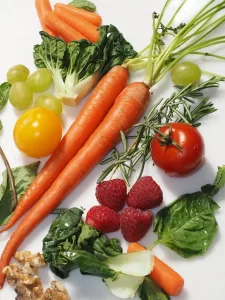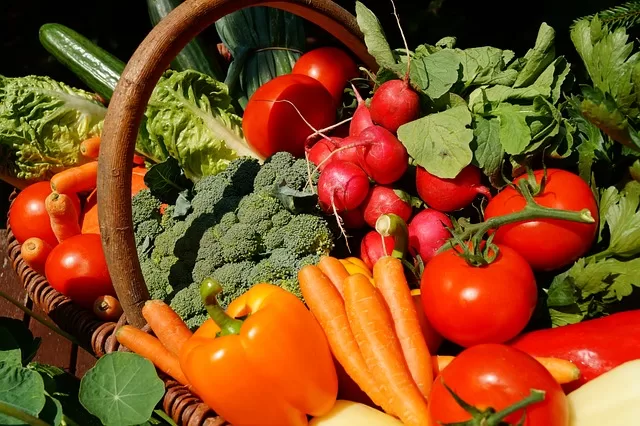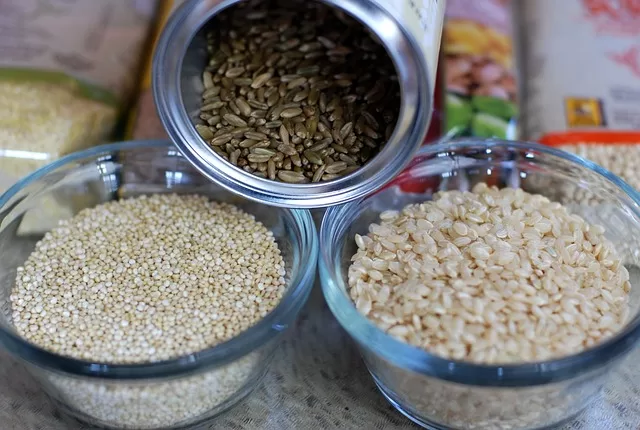This post contains affiliate links. See our Affiliate Disclosure Statement page for more details.
Table of Contents
Fresh Versus Canned Dog Food
One of the main responsibilities of being a pet owner is providing our dogs with a well-balanced diet that keeps them healthy and active.
However, we are also inundated with a myriad of choices when trying to select the appropriate diet for our dogs. Choices include Dry Kibble, Canned (Wet Food), Fresh Food, Raw Food, and Homemade as major options.
So, how do we choose what’s best for our Boxer?
A study of 1,450 US Pet Owners conducted by Jefferies Financial Services and published in the article Cost may hinder fresh dog, cat food sales growth, Pet Food Industry, Tim Wall, June 20, 2022, reported that
- 81% of respondents reported using Kibble
- 50% reported using Canned (Wet) food
- 17% reported using Fresh Food
- 9% Reported using Raw Food
Source: Jefferies Financial Services Pet Food owner study and Pet Food Industry Article June 20, 2022
The article cited two factors that were driving the data – Cost and Store Presence
When asked a follow-up question if cost was not a factor how would they choose to feed their dog, the data dramatically changed. The survey reported the following data in response to this question.
- Kibble – 36%
- Wet – 21%
- Fresh – 34%
- Raw 7%
Source: Jefferies Financial Services Pet Food owner study and Pet Food Industry Article June 20,2022
As you can see, if money were not an object, one-third (1/3) of dog owners would use fresh food, while only one-fifth (1/5) would choose canned food.
Clearly, pet owners see a benefit to fresh food if money were not an object because of the perceived benefits it has versus canned dog food. So let’s look at the benefits and do a detailed comparison.
7 Reliable Benefits of Fresh Versus Canned Dog Food
We will list the 7 benefits of Fresh versus canned dog food and then conduct a detailed comparison and then provide a summary comparing the 7 benefits below.
- Nutrition Retention
- Quality of Ingredients
- Fewer Additives
- Digestibility
- Weight Management
- Potential Allergy Management
- Dental Health
Now let’s take a closer look at each of these in more detail.
Fresh versus Canned Dog Food – Nutrition Retention

Nutrition retention? Just, so we are all on the same page, nutrition retention simply means that during and after processing how much of the product’s natural ingredients remain intact and available for use in the body.
Most foods, including dog food, are produced using a variety of Macronutrients – Proteins, Fats, Carbohydrates, and Micronutrients – Vitamins and Minerals.
Therefore, to make an adequate comparison between fresh versus canned dog food, we need to evaluate how much of the macro and micronutrients are available after processing in both of these products.
First, let’s examine the processing methods used to produce each of these products.
Nutrition Retention – Processing Methods
Both of these products undergo radically different processing methods when producing a finished product for consumption. Let’s look at the processing methods in more detail.
Processing Method – Fresh Food
Fresh dog food is minimally processed, typically involving raw or lightly cooked ingredients. This method aims to preserve the natural nutrient content of the ingredients by avoiding high-temperature cooking.
Usually, Fresh proteins, like Beef, Chicken, Turkey, and Lamb are used along with fresh fruits and vegetables, like sweet potatoes, kale, spinach, blueberries, and apples along with healthy fats.
Processing these ingredients raw or through light cooking allows most of these nutrients to remain intact in the final product.
This means that these ingredients will be available for the dog’s body to use to help keep your dog healthy and active.
Nutrition Retention – Canned Dog Food
Canned dog food undergoes a more intense processing method, including high-temperature cooking and sealing in cans.
This can lead to some nutrient loss due to heat exposure.
Heat can often lead to the breakdown or degradation of nutrients in the foods we eat. For example, if you boil broccoli or cauliflower for too long it becomes mushy and begins to fall apart.
In addition, many of the vitamins and minerals are lost in the water and not available for our bodies to use when we eat it.
The same holds true for canned dog food the high heat and pressure used in the canning process can degrade the macro and micronutrients.
Therefore, the amounts available for use are often lower than in fresh dog food and undergo less rigorous processing methods.
To illustrate the differences in macro and micronutrient availability, the table below compares the amounts of each available after processing.
For Fresh food that uses minimal processing and has proven support for helping with weight loss and maintaining a healthy weight for your Boxer try
Data Table – Fresh Versus Canned Dog Food – Nutrition Retention – Macro and Micronutrients
| Nutrient | Fresh Dog Food (%) | Canned Dog Food (%) |
| Protein | 85-90% | 70-85% |
| Fat | 90-95% | 80-90% |
| Fiber | 80-90% | 65-75% |
| Vitamins (A, D, E, etc.) | 75-85% | 60-75% |
| Minerals (Calcium, Phosphorus, etc.) | 80-90% | 70-85% |
| Moisture Content | 60-75% | 75-85% |
For additional information on macro and micronutrients for your dog read our articles
Fresh Versus Canned Dog Food – Quality of Ingredients

When we are selecting products to buy for ourselves, we often look for products that contain, whole, natural, and healthy quality ingredients.
The same should hold true when we are selecting products for our pets. After all, we want to give provide them with food that is nutritious and uses high-quality ingredients to keep them healthy and active.
Are there differences in the quality of ingredients between fresh versus canned dog food? Let’s examine each in more detail.
Ingredient Sourcing and Processing
- Fresh Dog Food
- Ingredients in fresh dog food are often sourced from human-grade, whole foods, and may include raw or minimally processed meats, vegetables, and grains.
- The minimal processing helps preserve the natural nutrient content.
- Canned Dog Food
- Canned dog food ingredients undergo a more intensive cooking and processing method, which can lead to some degradation of nutrients.
The data table below shows the differences in macronutrient quality between fresh versus canned dog food to illustrate the quality of ingredients used in terms of ingredient sourcing and processing.
| Macronutrient | Fresh Dog Food | Canned Dog Food |
| Protein Quality | High-quality, intact amino acids from fresh meats | High-quality protein, some amino acid degradation |
| Fat Source | Natural fats, essential fatty acids well-preserved | Preserved fats, potential for oxidation |
| Preserved fats, the potential for oxidation | Whole grains, fruits, and vegetables | Cooked grains, potential nutrient loss |
Vitamin Retention | Higher retention of vitamins due to minimal processing | Slight degradation of some vitamins |
| Mineral Retention | Higher Mineral Retention due to processing | Some degradation due to high heat processing |
Fresh Versus Canned Dog Food – Array of ingredients

Fresh dog food typically uses a broader variety of high-quality ingredients, while at the same time limiting the number of ingredients used in the final product.
In addition, because of the limited processing involved in producing fresh dog food, most of the nutrients are still intact and can be used by your dog to provide them with the energy and nutrients they need.
Canned dog foods often use a smaller array of high-quality ingredients compared to fresh dog food.
The bioavailability of some nutrients is lost due to processing at high temperatures and pressure to preserve the product.
As with fresh food, they also added vitamins and minerals but also used ingredients that don’t provide nutrition such as Smoke flavor.
So, based on our research, fresh dog food uses higher-quality ingredients and more of a variety of different fruits and vegetables than canned food.
However, fresh foods have to be carefully, monitored during production to ensure no spoilage or contamination occurs because they are not processed at high temperatures to kill potential pathogens.
For fresh dog food with limited high-quality ingredients to help keep your dog active and healthy try
For additional information on dog food ingredients read our articles
Fresh Versus Canned Dog Food- Fewer Additives

When comparing the ingredient labels of fresh versus canned dog food, canned dog food often listed fewer main ingredients such as protein, carbohydrates, and fats, but had longer lists of ingredients for vitamins, minerals, and fillers.
Canned dog foods also, listed lower-quality ingredients such as corn, wheat, and rice, which are typically lower-cost fillers.
Fresh food labels listed a higher number of ingredients that were more recognizable because they were whole-natural foods, like sweet potatoes, fresh chicken or turkey, spinach, Kale, blueberries, and apples.
When reading an ingredient list, it is essential to note that ingredients are listed in descending order based on the quantity used in the product.
So the first ingredient listed is in the product at the highest percentage, then number 2, and so on.
Usually, ingredients can be mixed on ingredient labels for ingredients in the product at 2% or less. This helps ensure competitors can’t simply take a product label and remake the exact product.
We examined several fresh dog food ingredient labels and found that they contained about 10 fresh proteins, Carbohydrates (fruits and vegetables), and fats and then included between 12-15 added Vitamins and Minerals.
We evaluated several canned dog food labels and found that they used very limited amounts of vegetables and or fruits, while at the same time using meat-by-products and fillers such as rice and corn which are lower-grade ingredients.
The ingredient labels for canned food had on average 8 main macronutrients listed which included fillers
For fresh dog food with limited ingredients and no fillers try
Fresh Versus Canned Dog Food – Digestibility

When comparing the digestibility of fresh versus canned dog food is there a major difference in how each is digested and used by your dog?
Before we answer this question, we need to define digestibility.
So, what is digestibility exactly, and is it important when selecting food options for my dog?
According to the article, What is Digestibility in Pet Food? A Quick Guide to the Basics, Wellnesspetfood.com, Dr. Danielle Bernal, 1/25/2021, digestibility is defined as
“When it comes specifically to pet food, the digestibility of a recipe is referring to the percentage of the food or nutrients that are completely digested, used, or absorbed by the dog or cat.” Source: Wellnesspetfood.com
But as a pet owner, how do you select products that are highly digestible so your dog is getting the most nutrients from the food it is eating?
Digestibility is determined by measuring a dog’s feces. The article Why Digestibility is Crucial for Dog Food, Dogfoodadvisor.com, states
“Digestibility is usually measured in percentage terms by analyzing dogs’ feces. The ‘grade’ awarded (the coefficient) is calculated by subtracting the amount of poop from the amount of food consumed.” Source: Dogfoodadvisor.com
The article also notes that it is essential to not only measure the amount of feces but analyze it for macro and micronutrients.
After all, if dogs are eating a certain food recipe but not absorbing as many of the macronutrients as intended then the food has a lower digestibility percentage score.
The dogfoodadvisor.com article provides a digestibility guide for dog food based on digestibility percentage scores which are listed below.
- Less than 75% = ‘poorly digestible’
- 75 to 82% = ‘moderately digestible’
- 82 to 88% = ‘highly digestible’
- Above 88% = ‘exceptionally digestible’
- Source: Dogfoodadvisor.com – Why Digestibility is Crucial for Dog Food
Ideally, as a pet owner, you want to provide your pet(s) with foods that have a high digestibility percentage.
Why? Because your pet will be absorbing and using more of the nutrients in the food it is eating to help fuel its body.
So how does fresh dog food versus canned compare in terms of digestibility?
According to the study True nutrient and amino acid digestibility of dog foods made with human-grade ingredients using the precision-fed cecectomized rooster assay1, which analyzed 6 Human Grade pet foods from Just Food for Dogs, a manufacturer of fresh dog food they state
“Although statistical differences were observed among foods tested in this study, all foods performed very well. All foods tested had very high AA digestibilities, with most exceeding 85% and some over 90%.”
Oba, P. M., Utterback, P. L., Parsons, C. M., & Swanson, K. S. (2020). True nutrient and amino acid digestibility of dog foods made with human-grade ingredients using the precision-fed cecectomized rooster assay. Translational Animal Science, 4(1), 442-451. https://doi.org/10.1093/tas/txz175
These are some of the Just Food For Dogs fresh foods used in the digestibility study if you would like to try them with your pet.
In terms of canned dog food the digestibility percentages are not provided as part of the ingredient label so, there is no direct comparison to fresh food.
However, VCA Hospitals make the following recommendations
“Feed your dog the highest-quality food you can afford. The differences between a premium food and budget food are not found on the nutrition label; they are found in the quality and source of ingredients. Two dog foods may each contain 27% protein but be vastly different when it comes to digestibility.”
Source: Nutrition – General Feeding Guidelines for Dogs, VCA Hospitals, Llera, DVM and Yuill, DVM
Fresh Versus Canned Dog Food – Weight Management

Fresh versus canned dog food for weight management are there major differences.
Some canned dog foods label themselves as weight management recipes but does this make them better options for your dog versus fresh dog food?
One of the biggest differences between regular canned dog food and their weight management formula is the fat content and calories.
Weight Management canned dog food will have lower calories and lower fat than their regular counterparts to help your dog lose weight.
Fresh dog food uses fresh lean proteins, vegetables and fruits, and healthy fats. These ingredients are also lower in calories and fat which helps aid in weight loss and management.
The difference between fresh versus canned dog food is in the amount of fiber. The fresh fruits and vegetables used in fresh food recipes are high in fiber and vitamins and antioxidants.
The fiber can make your dog feel full quicker so they eat less food at one time and keeps them fuller longer so they eat less. This in turn helps to support weight loss and maintenance.
Fresh foods get the nod for weight management because they utilize lean proteins for energy and fruits and vegetables to provide fiber and undergo less processing than their canned counterparts.
Ollie Fresh Dog Food offers two recipes to help your pet lose weight that have proven results. They include
For more information on weight management for your Boxer read our article
Fresh Versus Canned Dog Food – Potential Allergy Management
One of the benefits of fresh vs canned dog food is that fresh dog food offers the ability to select unique proteins to help manage food allergies your Boxer may experience.
Studies have demonstrated that the top 6 foods that lead to allergies in dogs are
- Beef
- Soy
- Dairy Products
- Lamb
- Wheat
- Chicken Eggs
According to published studies, 69% of reported allergic responses across the studies were reactions to Beef, Dairy Products, and Wheat.
In addition, an additional 25% of the dogs showed allergic responses to Lamb, chicken egg, and soy.
Typically, animal proteins are one of the main allergens causing the allergic response Therefore, limiting their exposure to these allergens listed above can help with potential allergy management.
In terms of fresh versus canned dog food, fresh dog food offers the ability to choose unique proteins that are not found in canned dog food.
These unique proteins can help with potential allergy management because they allow your dog to try foods that don’t have many of the common animal proteins that often lead to allergic responses.
The unique proteins include
- Pork
- Venison
- Fish
- Bison
- Rabbit
For additional information on Food allergies, read our article
Fresh Versus Canned Dog Food – Dental Health

When considering the dental health implications of fresh versus canned dog food, several factors come into play.
Fresh dog food, often prepared with whole ingredients and minimal processing, can offer certain advantages for dental health.
The mechanical action of chewing on raw or lightly cooked food can help naturally clean a dog’s teeth, promoting gum stimulation and reducing plaque buildup.
The presence of fibrous textures in fresh food, such as raw vegetables and lean meats, can aid in removing food particles from teeth surfaces.
Additionally, fresh diets often lack artificial additives and preservatives that might contribute to dental issues.
On the other hand, canned dog food, while convenient, may have potential drawbacks for dental health.
Canned food is typically softer in texture and doesn’t require the same level of chewing as fresh food does.
This reduced chewing action might result in less effective natural cleaning of the teeth and gums.
Furthermore, some canned dog foods might contain higher carbohydrate content and fillers that can stick to teeth, potentially increasing the risk of plaque accumulation.
However, it’s worth noting that some manufacturers produce canned foods with dental health in mind, incorporating specific textures and ingredients to encourage chewing and reduce plaque.
Fresh Versus Canned Dog Food – Summary
Fresh versus canned dog food which is better? While canned dog food offers more convenience and a lower cost, fresh foods offer 7 benefits versus canned food.
The 7 Benefits are
- Nutrition Retention
- Quality of Ingredients
- Fewer Additives
- Digestibility
- Weight Management
- Potential Allergy Management
- Dental Health
These benefits can help keep your Boxer healthy and active. If you haven’t tried fresh food with your dog, it may be an option you want to explore because of the benefits it can provide.

Discoverboxerdogs.com are Mary and Chris Kustanbauter. We reside in Red Lion, PA with our two Boxers, Duke and Katie, who are both rescue dogs. We have been working with Adopt A Boxer Rescue for the past 17 years and have adopted 5 Boxers from this fine organization. To learn more visit our Home, Boxer Dog Family, and Blogs Pages Visit us on social media on Facebook – Discoverboxerdogs.com, Instagram, and Pinterest.

